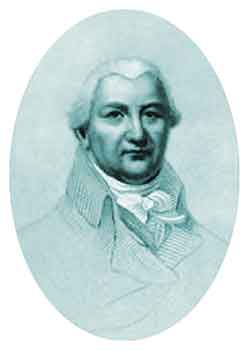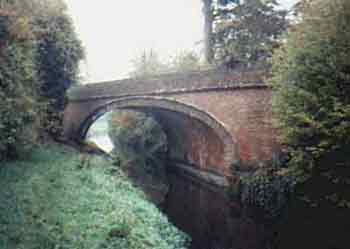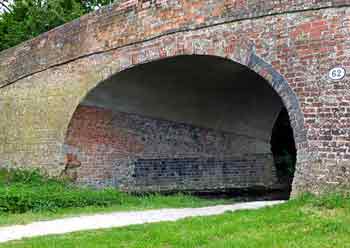
Everyone with a keen interest in canals will be familiar with the names of some of the civil engineers responsible for the construction of Britain's extensive canal network, particularly during the Canal Mania period. Names of engineers such as John Smeaton, William Jessop, John Rennie, Thomas Telford and Robert Whitworth will readily spring to mind in connection with their achievements, much of which still survives.
Unfortunately, in most instances it is not known how or where these men were educated as civil engineers beyond knowing that younger men were pupils of older and more experienced men. A myth seems to have developed that they worked on the principle that, 'if a thing looked right then it was right'. Nothing could be further from the truth than this adage, as all of them required a sound knowledge of mathematical principles. There is a well-known axiom that states, 'if a thing cannot be described mathematically then it cannot exist' and this is the axiom that early civil engineers used, just as they do today. Such a description is known as a mathematical model.
Possibly the greatest mathematician and scientist of all time is Sir Isaac Newton (1642-1727) and he is best known for 'The Calculus' (higher mathematics), the Binomial Theorem and his Three Laws of Motion. The most important aspect of Newton's work, as far as civil engineers were concerned, was probably Calculus and this was embodied in his most famous work, Principia Mathematica, published in 1687. This mathematical work contains a number of rules under the heading Reasoning and Philosophy and Rule 1 states: 'We are to admit no more causes of natural things than such are both true and explain their appearance'.
This does not mean to say that civil engineers of the day had recourse to a copy of Principia Mathematica every time they had a canal to build but it is possible that they had recourse to the works of Charles Hutton (1737-1823) who followed Newton and applied his mathematical principles to the design of the most common feature of every canal in the land,namely the arch.
Although the ancient Romans introduced the arch and understood some of its mathematical principles, it was not until the late 18th century that these were fully understood. On Britain's canals, the arch was used in a variety of forms, such as aqueducts, bridges, tunnels, tunnel inverts and lock inverts. More subtly, arches were incorporated into the abutments and side walls of aqueducts so that in plan view they formed arches. Moreover, abutments were also battered (reduced) upwards and often provided with buttresses or pilasters in order to better withstand both water and ground pressure.
On the Louth Canal in Lincolnshire, six of the eight locks incorporated arches in a way that was unique to this canal. With John Grundy as the engineer, construction of this canal commenced in 1767 and it was opened in 1770. The chambers of these locks did not have straight sides but instead they were scalloped with four elliptical arches. The purpose of this was to increase the strength of the lock walls to better withstand lateral ground pressure and not water pressure, as one would normally expect.
Strangely, books about famous civil engineers of the 18th century never mention the name of Charles Hutton, the academic who contributed so much to the technology of the day. Charles Hutton LLD, FRS, was born at Newcastle-on-Tyne on the 14 Aug 1737 and he died at Bedford Row, London, on the 27 Jan 1823. In the field of civil engineering, he was the first to describe the arch in mathematical terms.

Charles Hutton.
Hutton was a gifted mathematician who opened his own school of mathematics at Newcastle-on-Tyne in 1760. While working there, he surveyed the city of Newcastle and produced a map of it in 1770. In 1772 he published his work, 'Principles of Bridges' and this was the work turned to by civil engineers of the day. Following on from this he became professor of mathematics at Woolwich Academy from 1773 until 1807. In 1785 he published his 'Mathematical Tables', which would also have been used by engineers of the day when they were making calculations. The Civil Engineering Department of the University of Salford has a copy of Hutton's 'Principles of Bridges'.
In 1779, Hutton was elected foreign secretary to the Royal Society but he resigned in 1783 because he considered that the behaviour of the president, Sir Joseph Banks, towards the mathematical section of the Society was too high-handed. It is of interest to note that the year of his election in 1779 also saw completion of the first iron bridge in the world at Coalbrookdale, Shropshire.
Shortly before his death, he was consulted about the curves that should be adopted for the arches of the proposed New London Bridge across the river Thames, as it was to be a segmental-arch bridge, that is, the five arches were to be semi-elliptical in shape. Construction work began on this bridge in 1824, the year after Hutton's death.
Other Papers published by Charles Hutton include:
 |
 |
The skew bridge across an isolated section of the derelict Hereford and Gloucestershire Canal at Monkhide, Yarkhill, north east of Hereford. The skew angle of this bridge, which carries a minor road over the canal, is about 63° and it is believed to be the most askew bridge on Britain's waterways. It was built by Stephen Ballard in 1843. In the case of a canal, the skew angle is defined as the inclination of the centre line of the roadway to the normal of the centre line of the canal. This bridge is listed Grade II, List Entry No. 1349186. |
Longmoor Bridge over the Grantham Canal. This skew bridge is situated about one mile north east of Woolsthorpe, Grantham, Lincolnshire. The engineer for the Grantham Canal was William Jessop who was also a business partner of Benjamin Outram in Benjamin Outram & Co (Butterley Co) of Ripley, Derbyshire, which was founded in 1790. The Grantham Canal opened in 1797 and this makes this skew bridge one of the first in the country. It is contemporary with the skew Store Street Aqueduct (1797) on the Ashton Canal in Manchester that was built by William Jessop’s business partner, Benjamin Outram. |